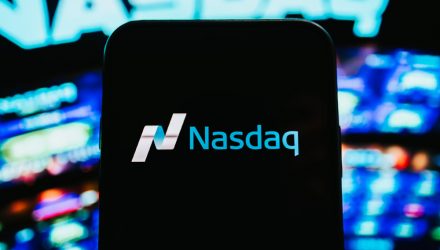While the dividend profile of the technology sector has improved markedly in recent years, the tech-heavy Nasdaq-100 Index (NDX) still doesn’t sport an eye-catching yield. Cap-weighted exchange traded funds following NDX currently yield a scant 0.73%.
Thanks to covered call ETFs, there are avenues for bolstering the NDX proposition. Enter the Global X Nasdaq 100 Covered Call ETF (QYLD). QYLD, which turns 10 years old in December, is a titan among covered ETFs as highlighted by its $7.89 billion in assets under management. That makes it one of the dominant names in this category.
That’s impressive to be sure, but the data point that’s likely to catch investors’ eyes is QYLD’s trailing 12-month yield of 13.70%. A tempting payout yield to be sure, but QYLD’s near-term relevance could be heightened because NDX is up nearly 39% year-to-date. Modest pullbacks or choppy, sideways trading action are conducive to covered call strategies and if those scenarios hit NDX, QYLD could be valuable beyond its elevated income stream.
Other QYLD Perks
QYLD follows the Cboe Nasdaq-100 BuyWrite V2 Index, which is the covered call equivalent of NDX. That doesn’t mean investors can’t pair the Global X fund with a traditional ETF that’s linked to NDX. In fact, that pairing might prove to be a sound idea.
“Duplicating exposures to Nasdaq 100 constituents might seem counterintuitive at first glance when trying to mitigate risk. However, an at-the-money covered call strategy like QYLD seeks to monetize the index’s volatility to create income that can act as somewhat of a hedge,” noted Global X’s Robert Scrudato. “That potential income can also supplement an existing growth strategy while offering a portfolio a positive relationship with volatility that other investment vehicles may not provide.”
While covered call ETFs leave some upside on the table relative to income-heavy pure beta equivalents, the robust income profile offered by funds such as QYLD can keep them somewhat competitive with traditional equity exposures. That comes with the potential for downside protection and the benefit of income that’s not interest rate-sensitive. Plus, the audience for concepts such as QYLD is wide.
“The income component may suit the needs of various accounts, including retail investors on the cusp of retirement or institutional cases like pension funds and endowments,” concluded Scurdato. “That said, writing call options against 100% of an underlying portfolio can affect a fund’s performance in varying market scenarios. In theory, the premiums that QYLD receives position it to outperform the Nasdaq 100 most effectively when the index trades in choppy, flat, and declining directions.”
For more news, information, and analysis, visit the Alternatives Channel.








